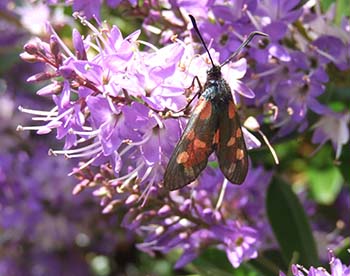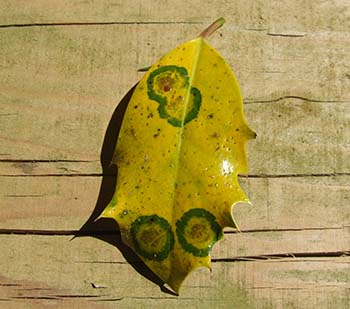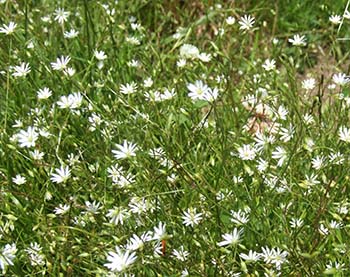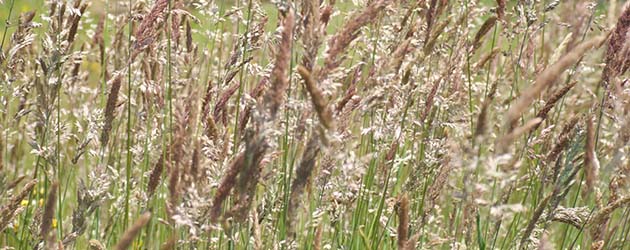This is really just a local nature report, so don’t expect a punchline. We’re promised a heatwave from Europe this weekend. The papers were, of course, immediately blaming it on climate change, but you may recall that Irving Berlin’s Heatwave appeared in 1933, during the dust bowl years, and the Martha and the Vandellas song of the same name came out in 1963, and depended on people picking up the allusion. In fact 1962-3 was, in Britain, notably cold and snowy, and it wasn’t nearly as hot a summer as those I remember from the fifties. It’s called “weather.”
Here the June heat is mainly notable for the sudden increase in insects everywhere. There is a veritable hum in the air as you walk along the lane, and a single roadside umbellifer-head might have four or five different species feeding on it, from brilliant green flower beetles to pale-bodied flies. And one can see maybe half a dozen species of bee on one garden shrub. The heat also marks the arrival of newly-emerged and migrant butterflies, like the first painted ladies, red admirals and marbled whites, supplementing what, in our wildflower meadow, appears a very good generation of meadow browns and common blues, and the odd second generation brimstone. July will bring in the more iconic species of butterfly.
Even as I write, I’ve just had to release a large, interesting, solitary digger wasp from the study window. Less solitary is the large nest of common wasps being built nicely in an old ant-nest near the top of our hill (fortunately too far from the house to interfere with us – we get their pest control without having to guard the drinks too much).
I also note, for the third year in succession, a hummingbird hawkmoth supping from the jasmine outside the bedroom window. I’m sure it’s not the same individual, but it’s always apparently solitary and evidently a creature of habit. Another solitary probable non-returner is the single bat we’ve seen hunting over our patio at dusk. For several years a long-eared bat roosted in our loft, and the individual nature of our current visitor seems to indicate it’s the same species, though I see no signs of current habitation in our roof this morning.
Perhaps it’s found a roost in an outhouse, as have some definite returners – our intrepid swallows, using a new nest they’ve built in the stable, whose second brood of the year has just fledged and are engaged in training flights over the meadow with their devoted parents. I think they’ll manage a third brood before Africa calls. A pair of pretty stock-doves has also returned and, no doubt has set up a nest in a hollow tree somewhere (last year they used my owl box, which the tawny owls seem to disdain, though their nocturnal calls are all around).
It has, in fact, been a notably good year for local birds. The feeders have been frequented not only by broods of the robins from the box in the hay-store, and a spotted woodpecker with a single youngster from the big oak tree, but by nuthatches, blackbirds, dunnocks, chaffinches, bullfinches and five species of tits. A wren is nesting in a terrace close by, as ever. And that’s just the little guys – jays, a pair of pheasants and a couple of muscular ravens are turning up regularly too. As do lazy rabbits and a badger who is to be seen and heard snuffling outside the bathroom by moonlight. Last year even the roe-deer got that close to the house to nibble the honeysuckle, though at present several individuals and families are sticking to the meadow when they venture out of the wood.
So too is our family of carrion crows, regarding our spread as their territory since we moved here ten years ago and crowing noisily to wake us up in the morning or intimidate the chickens. Over the years they are usually to be seen as a pair with a trainee juvenile, thus deserving the collective name “Eeny, Meeny and Miney,” by which monicker they even made it into my book. However, this year they seem to have raised two young, and so are now dubbed “Eeny, Meeny, Miney and Mo,” almost warranting the old collective name of “a murder of crows.” Wood-pigeons also appear to be breeding on an industrial scale this year, which is good news for foxes, raptors and the neighbour’s cat.
These are the “staff-members” at the Camel’s Eyrie as June draws to an end, though the occasional visitors from foxes and lizards to dragonflies, and overflying raptors like buzzards and, sometimes, peregrines outnumber them in variety. We’ve even had a our first house-sparrow in a decade – usually it’s too rural for them, it seems.
Amongst plants, I had reason to mention the increasing variety of orchids in the wildflower meadow recently. They’re now past their best, but are beginning to be replaced by knapweed and, particularly good this year for some reason, bright-purple self-heal. Not counting grasses I’ve identified around fifty species in the meadow this year, which given that it’s only in its third year of active management is quite promising. The distribution of plant species, as of animals, varies widely from year to year, but not because of climate change, though weather differences must be of considerable importance, as well as the fact the the meadow is maturing towards some future equilibrium.
I’ve no doubt that longer-term changes in climate do make a difference to habitats. I was remembering recently how heat-loving Dalmatian pelicans were thriving on the Somerset levels in Roman times, when vines were being grown as far north as Yorkshire. It made me wonder what happened in those days to the tundra species about which people worry so much now – the ptarmigan, arctic hare and snow bunting, for example, which are retreating to the highest Scottish peaks and may soon have no suitable habitat. It’s hard to believe Scotland was spared earlier warming periods – in all likelihood the highlands have been recolonised on regular occasions from further north. Wildlife is mobile and adaptable, as the thriving polar bear population shows.
But enough of species distant in space and time – my aim today is simply to celebrate, and try to share, the fact that the natural world in my neighbourhood, and I’ve no doubt in yours, remains endlessly varied, interesting and happy. And, of course, therapeutic, because it is mercifully free of human politicking.







